Fall 2019 Newsletter

Quick Content Links
- President’s Message
- 2019 Shad in the Classroom – Inspiring Young Biologists
- Old and in the Way?
- News from the North Carolina Chapter American Fisheries Society Awards Committee – 2019 Student Travel Awards Presented
- IN MEMORIAM: Melvin T. Huish
- Good Work! – Recent Publications by NCAFS Members
- Freshwater Mussel App Now Available
- NCWRC Wildlife Diversity Program Quarterly Project Reports
- Call to Action!
- Valuable Links
President’s Message
During my last President’s Message, I challenged each of us to think about how we’re addressing our individual passions towards aquatic resources. I hope that you had an opportunity for that reflection, and if not, I urge you to take the time to do so. We have our Annual Meeting on the horizon, so if you’re comfortable in sharing, please find me there and let me know what motivates you (I would truly enjoy hearing from you).
Speaking of 2020, Ben Ricks (President Elect) has been working to organize our next Annual Meeting. It is exciting to announce that we will be heading back to New Bern on 5–6 February 2020. As in 2017, we will be at the New Bern Convention Center and Bridgepoint Hotel. Please contact President Elect Ricks with any questions.
Finally, I wanted to take a moment to share my gratitude for each of you and your efforts for aquatics. I’ll be surprised if you find me in New Bern next February and tell me that recognition is what motivates you; however, I’ll also be surprised if any of you receives as much acknowledgment as you deserve. Please know that your dedication to the profession and resources is appreciated – thank you!
Have a great rest of your fall.
Jake
Submitted by Jake Rash, NCAFS President
2019 Shad in the Classroom – Inspiring Young Biologists
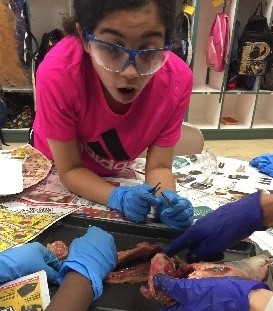
Fish dissection and anatomy lesson at Ballentine Elementary School. Photo by Kathy Wall.
Through the Shad in the Classroom program, elementary, middle, and high school students learn concepts related to the American Shad’s survival, the species cultural and biological importance, its ecological connections to other species and habitats, and the significance of genetic integrity. Teachers also integrate various other disciplines into the program including math, social studies, technology, art, literacy, and writing. The program heightens knowledge and awareness in future generations of an important migratory fish.
The program goals incorporate a “hands-on” approach with raising shad and give the students a strong connection to the fish resource and the river basin. Program enhancement activities like the fish dissection lessons are highly valued by our students and teachers. The hands-on approach of these activities allows students to see, touch, and explore various fish species helping to more fully engage the students.
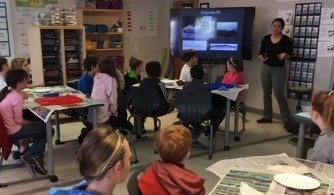
Sabrina Inthisarath conducting a fish dissection and anatomy lesson at Exploris Elementary School. Photo by Exploris team.
The Shad in the Classroom Program continues to be a success due to its dedicated partners. The program is managed by the North Carolina Museum of Natural Sciences (Museum) and it receives significant logistical and financial support from the Albemarle-Pamlico National Estuary Partnership (APNEP), the North Carolina Wildlife Resources Commission (NCWRC), and the U.S. Fish and Wildlife Service (USFWS). North Carolina State University (NCSU) and the NCAFS NCSU and ECU student chapters also play significant roles.
With this newsletter update we wanted to highlight some of the appreciative quotes about the dissection lectures from the teachers, students, and the lecturers. Note that some of the quotes contain a lecturer’s name, however, all lecturers were greatly appreciated!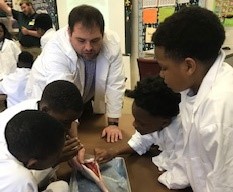
Fish dissection and anatomy lesson at Peetree Elementary School with teacher Brad Rhew. Photo by Brad Rhew.
“The dissection was a tremendous hit with my students. Haley did an awesome job explaining her studies and teaching on general fish anatomy. They had an awesome time.”
“Our dissection was amazing, and Sabrina did a great job. The kids absolutely loved the experience and really enjoyed the expertise Sabrina brought to our class. I’m pretty sure we have a few fish biologists or biologists in the making.”
“It was great! Steve was awesome! The kids were really into it!”

Gus Engman (AKA Mr. Guts) conducting a fish dissection and anatomy lesson at Brogden Middle School. Photo by Christina
“It was great! She pitched the lesson at just the right level and the students were engaged for a full hour.”
“The dissection was wonderful! The kids have continued to ask me when “Mr. Guts” (Gus Engman) can return, and I am having a hard time correcting them.”
“The dissection was great! There were 22 students (20 high school seniors and 2 high school juniors) and the teacher, Mrs. Raiford. I was very impressed at the participation and excitement from the students, they were all very open minded.”
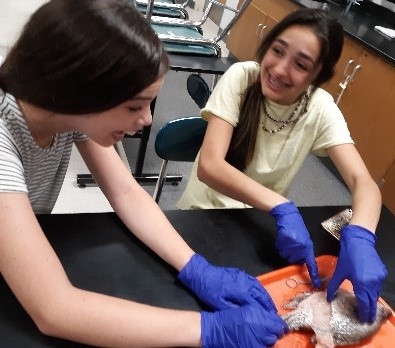
Fish dissection and anatomy lesson at Fuquay Varina Middle School. Photo by Beth Selig.
“I learned a lot about fish that I would have never known. When we learned anatomical terms and directions in class, I got use to using them, but when we did it on the fish yesterday, I got a better understanding. Ms. Gambill was very helpful yesterday because she allowed us to ask her questions during the process. I had a better understanding of different fish and how they adapt to living. I would have never thought that I would be able to see the eggs in a fish, but I did yesterday.”
“I really hope Ms. Haley Gambill can come again before the end of the school year and maybe she can bring another animal that we can dissect.”
“At first, I thought that dissecting fish would be really messy and gross, it turned out to be really interesting. The way that the anatomy of a fish is set up is really interesting, the fact that so many organs can fit in such a tiny body. My group cut out the heart and the eye, they ended up being around the same size which was interesting. I think that it was a good learning experience because it shows how organs can be “placed” in something to make it operate/function normally but make it look small as well.”
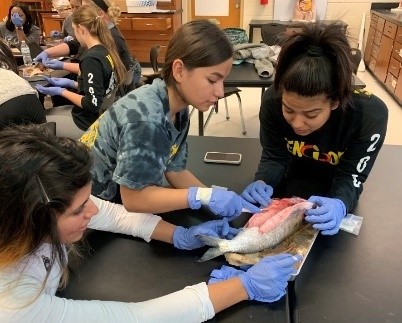
Fish dissection and anatomy lesson at Smithfield-Selma Senior High School. Photo by Tholeathcus Raiford.
Because of these volunteers and the generosity of fish donations (>300 fish – Thank you Dr. Rich Noble, Dr. Phil Doerr, and fellow anglers, and David Deaton and the NCWRC’s Armstrong Hatchery staff), we were able to facilitate the dissection lecture for 19 classrooms (1,362 students). Also, April Lamb and Jennifer Archambault helped coordinate with the NCSU graduate students, Steven Parker (NCSU) helped collect fish specimens, and Steve Meyer helped coordinate with the ECU graduate students.
Due to the volunteers we were able to accommodate all of the teachers that requested a dissection lecture at their school. We are very grateful to NCSU, ECU, and the NCWRC educators and for the fish donations, which led to the great success of this activity. All teachers that were able to participate in this class reported that the activity enhanced the learning experience for their students. The fish dissection continues to be a highly appreciated component that we have added to the program.
We are also grateful to all of our partners and to the all of the volunteers who help with every aspect of the program — from the collection of the broodstock and the running of the embryos to the schools, to the fish anatomy and dissection lessons, to the releasing of the larval fish in their natal rivers, and everything in between. We are gearing up for next year and look forward to working with chapter members again for the 2020 Shad in the Classroom Program!
Melissa Dowland, Megan Chesser, and I give a big thank you to all the many volunteers, particularly the NC AFS Chapter and the NCSU and ECU Student Subunits, and NCSU, NCWRC, USFWS, and APNEP! If you would like to be involved in the program next year, please contact Danielle at [email protected].
Submitted by Danielle Pender, Shad in the Classroom Program Specialist, North Carolina Museum of Natural Science, Education Section
Old and in the Way?
“Gold will turn to gray and youth will fade away. They’ll never care about you, call you old and in the way.” (Songwriters: Carter Stanley & Ralph Mayo)
I first heard these lyrics in 1975 when I was much younger than now. At that time, I could not foresee that they might apply to me decades later. However, since retiring in March 2017, I have tried to heed Fred Harris’s advice bestowed upon me at my retirement social: “Retire from your job, but not from your profession.” Over the past 2.5 years, I have endeavored to remain relevant and a “North Carolina fish diversity influencer.” How have I accomplished this?
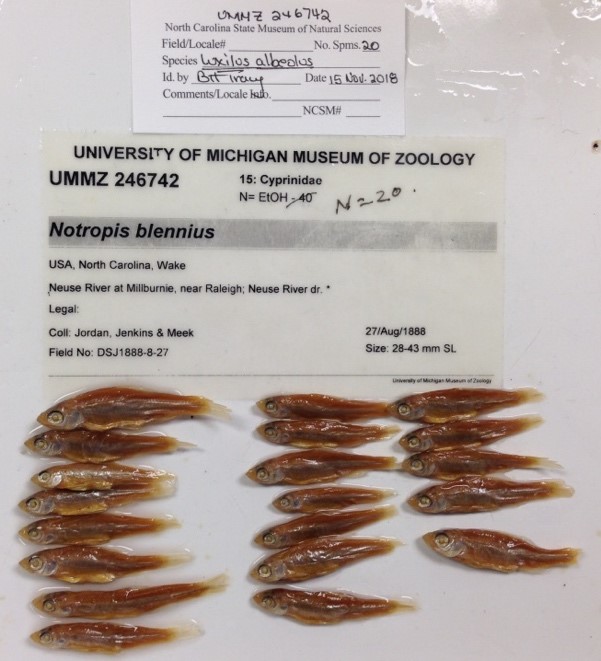
Figure 1. Specimens of Luxilus albeolus, previously mis-identified or mis-labeled as Notropis blennius, collected from the Neuse River at Milburnie, Wake County, August 27, 1888.
After taking a mandatory six month “sabbatical” from North Carolina state government, I began volunteering about 18 hours every week in the Ichthyology Laboratory at the North Carolina Museum of Natural Sciences (NCSM) working on the backlog of unidentified and uncatalogued freshwater, marine and estuarine lots. The backlog included thousands of specimens, some dating back to the mid-late 1800s from the collection of the Charleston Museum and more recent (circa 1930s-1990s) collections from Western Carolina University, Duke University, Stockton State University, and North Carolina State University. Identifications, labeling and geo-referencing the material has been a long slog, but there is light at the end of the tunnel. So far, this work has led to co-authored oral presentations in 2018 and 2019 at annual meetings of the Southeastern Fishes Council and the North Carolina Chapter of the American Fisheries Society as well as submittal of a manuscript to Southeastern Naturalist on the historical status of the Longear Sunfish, Lepomis megalotis, in North Carolina. This multi-year volunteering at NCSM will ultimately lead to submittal of a co-authored (Fritz Rohde, Gabriela Hogue, and myself) manuscript: “An Annotated Atlas of the Freshwater Fishes of North Carolina,” which is nearing completion. The Atlas will cover more than 250 species of fish found in freshwater and estuarine environments in North Carolina and involved examination of historical specimens vouchered at regional and national museums whose identities or collection locales were suspect (Figure 1).
My fisheries-related volunteerism has not been limited to NCSM. I have continued to be an active member of NC AFS, helping out wherever and whenever called upon including: on the annual meeting program committees, participating in a continuing education workshop (“Nuisance Freshwater Fish Species in North Carolina”, Aquatic Nuisance Species Workshop), serving as student paper judge, and contributing to the Chapter newsletter, (“Distributional Status of Five Non-Indigenous Species in the Yadkin-Pee Dee River Drainage”, Summer 2017 and “Toto, I Don’t Believe We Are in North Carolina Anymore”, Summer 2018).
Luckily, I am still fortunate to be able to get into the streams and lakes and touch fish as I have volunteered with the NCWRC staff with the long-term Robust Redhorse project on the Pee Dee River in Richmond County (with Brena and Katharine) and with a boat electrofishing class field trip at St. Andrews University in Laurinburg (with Kyle and Casey); with the USGS and NCSM staff on Swift and Contentnea creeks in Wake and Greene counties, respectively; with NCSU graduate student April Lamb re-introducing native aquatic vegetation into Lake Mattamuskeet in Hyde County; and with NCSU Drs. Tom Kwak, Jesse Fischer , and Gus Engmann with fish sampling and sample processing at Lake Raleigh in Wake County as part of their short course on pond fishery management and at Summer Camp in Durham County. I have also managed to earn a few spare dollars working with Tim Savidge and Tom Dickinson, Three Oaks Engineering, on their fish community recovery project following the demolition of the Milburnie Dam on the Neuse River in Wake County.
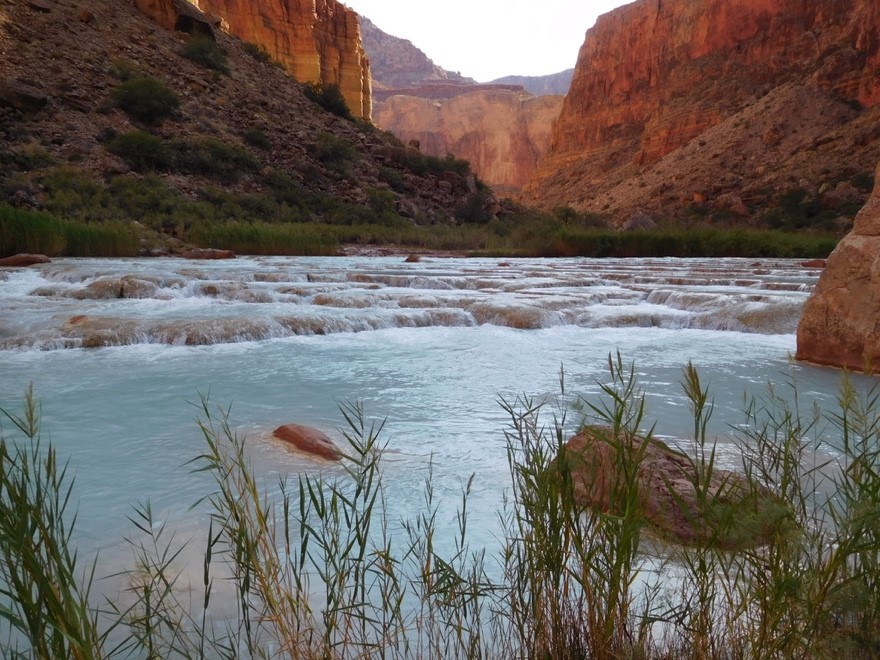
Figure 2. Little Colorado River, “Blue Water”, within the Coyote Camp Reach, Coconino County, AZ, September 24, 2019.
However, the most memorable volunteer project I’ve experienced since conducting limnological studies at the Gates of the Artic National Park and Preserve (AK) with Drs. John R. Jones and Jaqueline LaPerriere in 1993 and 1995 was from September 15-28 (29), 2019 when I participated as a volunteer on a U.S. Geological Survey’s Grand Canyon Monitoring and Research Center-funded study under the direction of the U.S. Fish & Wildlife Service in Flagstaff, AZ on the Little Colorado River (LCR) in north-central Arizona within the Navajo Indian Reservation lands (Figure 2).
The long term study on the largest tributary to the Colorado River downstream from Glen Canyon Dam focused on estimating the abundance of various size classes of the federally endangered Humpback Chub, Gila cypha (Figure 3), through mark-recapture efforts.
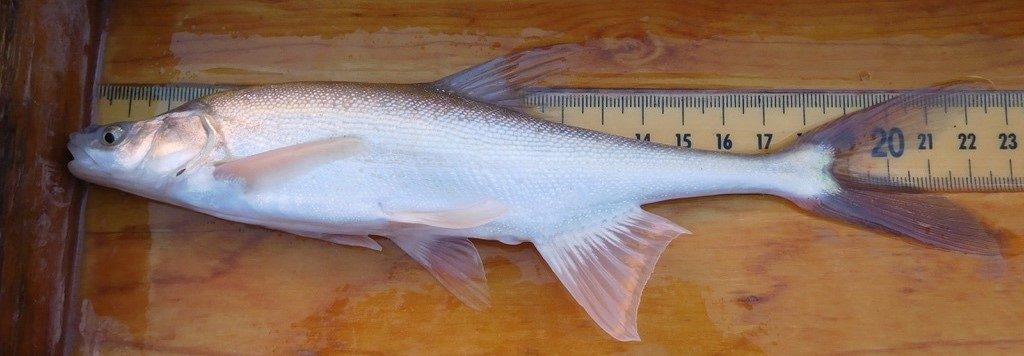
Figure 3. Gila cypha, Humpback Chub, Little Colorado River, Coyote Camp Reach, Coconino County, AZ, September 18, 2019.
Field techniques employed a total of 180 hoop nets set at three reaches across 20 transects per reach for three days per reach. All chubs were either tagged with PIT (Passive Integrated Transponder) or visible elastomer (VIE) tags. Field conditions were ideal with plenty of “blue water” until the last day and a half when conditions changed dramatically. To hear more about my LCR adventure, you will have to attend the 2020 annual NC AFS Chapter meeting where I will make a presentation on this most fantastic and unforgettable opportunity of my lifetime. Am I old and in the way? I beg to differ.
Submitted by Bryn H. Tracy, Retired, Apex, NC
News from the North Carolina Chapter American Fisheries Society Awards Committee – 2019 Student Travel Awards Presented
The NCAFS Chapter established a Student Travel Award Program in 2005 for the specific purpose of encouraging professional growth of students and maximal participation of undergraduate and graduate students at the annual meeting of the American Fisheries Society. Monetary support is provided to qualifying students via a travel award of $200 to $400 to help defer the cost of meeting travel, registration, and accommodations. The 2019 awards were presented to four students for the 149th Annual Meeting of the American Fisheries Society held September 29 through October 3 in Reno, Nevada, in conjunction with The Wildlife Society.
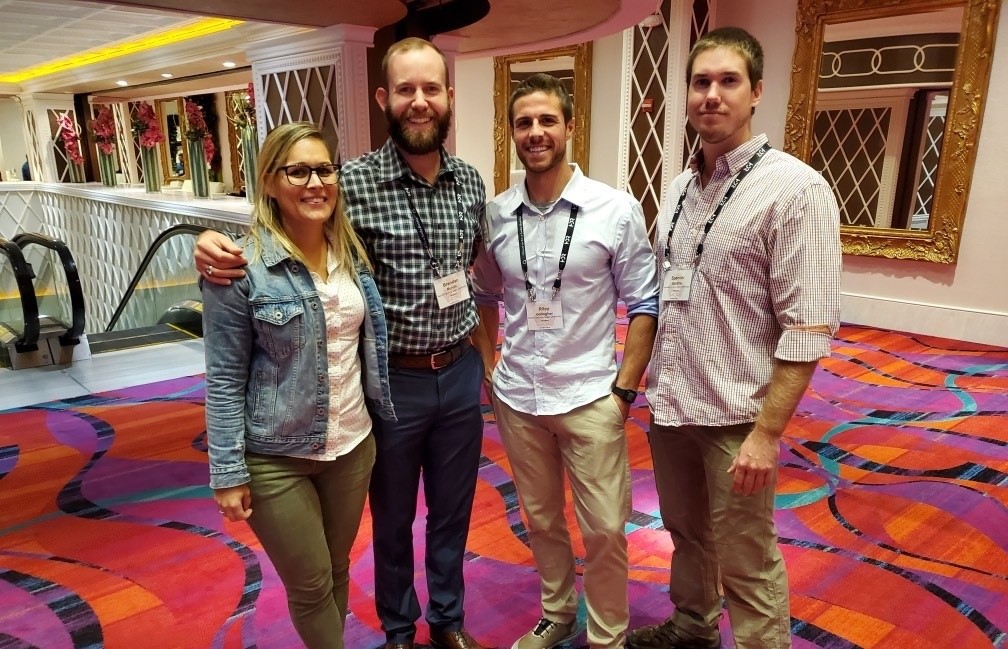
The 2019 N.C. AFS Student Travel Award recipients pictured at the AFS Annual Meeting in Reno, Nevada. From left to right are: Bonnie Myers, Brendan Runde, Riley Gallagher, and Spencer Gardner. Photo by Dr. Tom Kwak
The 2019 award recipients included three graduate students from NC State University and one from the University of North Carolina-Wilmington (UNC-W). Brendan Runde and Riley Gallagher (advised by Dr. Jeff Buckel) and Bonnie Myers (advised by Dr. Tom Kwak) were the recipients from NC State University. Spencer Gardner was the recipient from UNC-W and is advised by Dr. Fred Scharf. They each received a cash award of $400 from the Chapter’s Ichthus Fund account, which was established specifically to foster student involvement.
Each of these students represented the Chapter admirably at the meeting and expressed their sincere gratitude to the Chapter for helping to make their attendance and participation possible.
Submitted by Greg Cope and Corey Oakley, NCAFS Awards Committee
IN MEMORIAM: Melvin T. Huish
Dr. Melvin T. Huish of Brevard, NC, died on April 6, 2019, at the age of 95. Dr. Huish was my undergraduate advisor at North Carolina State University (NCSU) and got me started on a career in fisheries. I am very grateful for that, and wanted to send a note to the fisheries community about his life and career. I gathered some information from his obituary, found some professional information online, and talked or emailed with former students and colleagues.
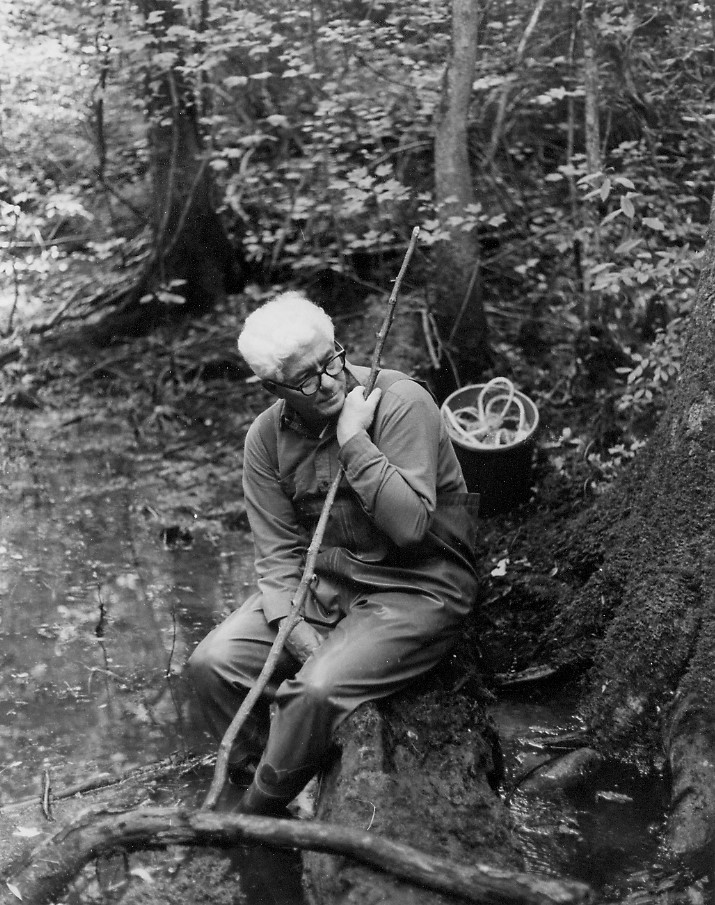
Dr. Melvin T. Huish. Photo origin unknown.
Dr. Huish was a native of Alton, Illinois. He earned an MS degree in 1947 from the University of Illinois, studying food habits of Largemouth Bass, Bluegill and Green Sunfish. His first publication was a 1947 Copeia article on the Short-tailed Shrew as a food item for Green Sunfish! He worked for the Florida Division of Game and Fresh Water Fish, then earned a PhD at the University of Georgia. His dissertation research was entitled “Cardiac and opercular rate responses of Ictalurus nebulosus (LeSueur) to representatives of certain drug groups.”
Dr. Huish was the Leader of the NC Cooperative Fishery Unit, located at NCSU, from 1972 through 1988. His field research addressed species ranging from Pirate Perch to dusky sharks, and habitats from coastal streams to the Cape Fear River. Dr. Richard Noble, who led NCSU’s Fisheries and Wildlife program during that time, recalled that Dr. Huish organized an annual picnic at Schenck Forest to promote interaction between the university faculty and agency fisheries staff. This was an important effort because it preceded the organizations (NC Fisheries Workers and NCAFS) that later served that role.
One of the courses taught by Dr. Huish was Aquaculture. It included a segment on pond management for fishing, and numerous field trips. He believed the students needed some practical dimensions, which were otherwise somewhat lacking in the undergraduate and graduate offerings. The course attracted substantial enrollments, and a number of the students went on to careers in some aspect of aquaculture, public and private. He included hybrid Striped Bass production and utilization; those were the days before the Zoology Department’s warmwater aquaculture initiatives. He was particularly interested in the development of hybrid Striped Bass fisheries in public and private waters, and devoted much of his research to that direction.
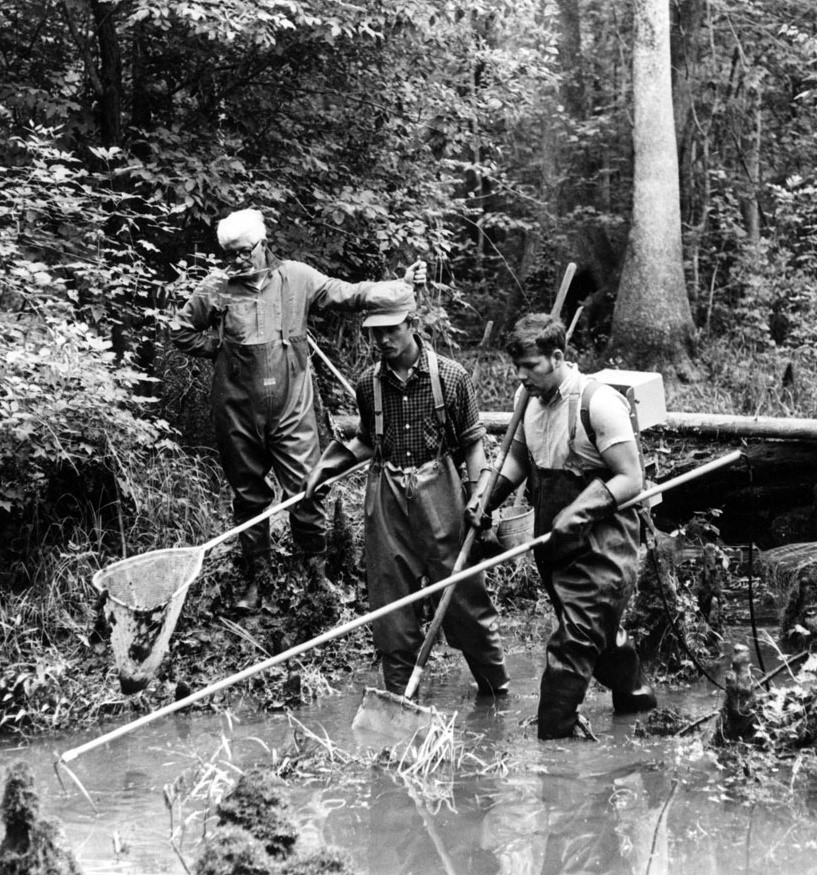
Dr. Huish with students (Bill Tarplee, right) surveying an eastern NC swamp. Photo origin unknown.
Dr. Huish’s most cited publication was a Progressive Fish Culturist article on culture of hybrid Striped Bass with lead author Dr. Howard Kerby (NC Unit Assistant Leader 1975-1988) and second author (and NCSU professor) Jeff Hinshaw. Another widely cited publication was a U. S. Fish and Wildlife Service report by Dr. Roger Rulifson, Huish, and R. W. Thoesen on restoration and management of anadromous fish in the southeastern United States.
Dr. Noble recalled that Dr. Huish’s favorite place was Lake Ellis Simon (Camp Bryan in Craven County). In the 1970s, he conducted a multi-year investigation of the fish community of this unique Carolina Bay lake, which stands as the classic baseline for this type of system. During the study, he began to wonder how the massive numbers of nesting Osprey managed to support their large number of young on such a sparse prey base. This question led to many years of Osprey research and recognition of the daily excursions from the lake to the estuary in search of food. Having so much experience with the lake, Dr. Huish provided guidance to Camp Bryan on development of their quality bass fishery, and purported that no place in the state offered a better chance of landing a 10-pound bass. Yet, instead of trying to do so, he would just as soon dip some mosquito fish, hook one under a bobber, and catch quality Warmouth along the bank.
Former graduate student Mike Wicker recalled that Dr. Huish started the “Carpathon” tournaments that were a lot of fun and provided an opportunity for faculty, graduate students and family and anyone else that enjoyed fishing or just having fun to get to know each other better. Dr. Huish’s assistance in selecting the secret site for the event was viewed as invaluable, until the year the Carpathon was held at Harris Lake, which at the time had no carp population!
Dr. Huish was also famous for his old Plymouth station wagon which always had a canoe strapped to the top. When asked about it, Dr. Huish reportedly said it was to keep water out of the car because of holes in the roof! He also was not above pulling a prank on the graduate students to teach a lesson. Dr. Wilson Laney recalled that some of the NCSU graduate students had left out an expensive calculator (which seems unlikely now, but was a real thing in the early 1970s). Dr. Huish spotted the calculator and hid it in order to make the graduate students sweat!
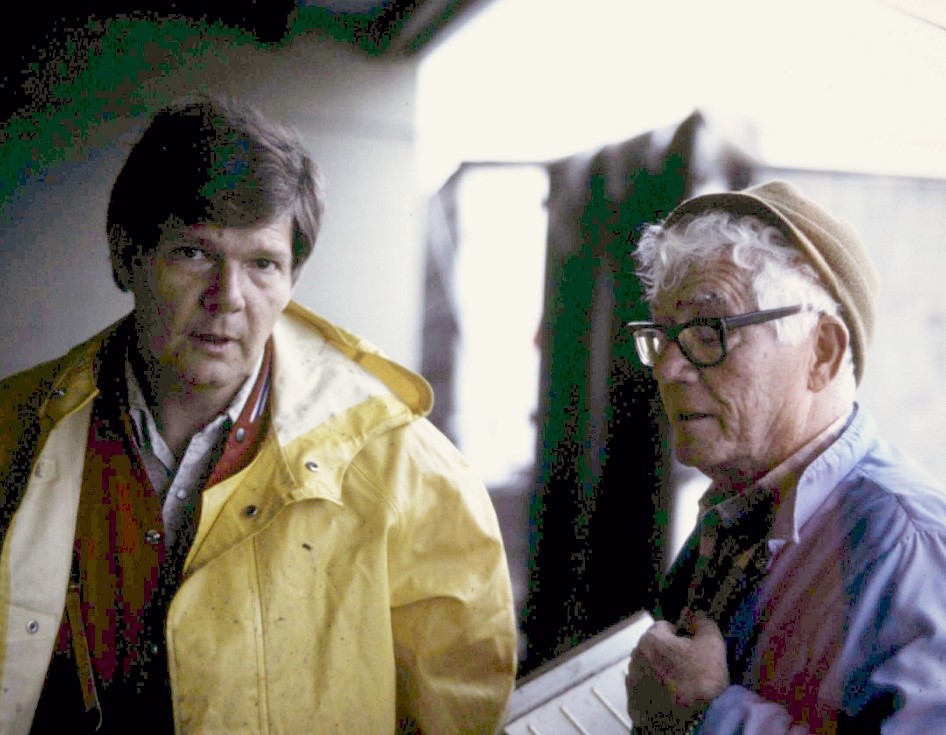
1986 photo of Dr. Huish (right) with Dr. Howard Kerby (NC Unit Assistant Leader 1975-1988). Photo by Dr. Rich Noble.
Dr. Huish was known for his concern for students and their well-being. Many of his former students kept up with him for most of their professional lives. He lived in Brevard, NC for over 25 years after retirement, and enjoyed long walks in the mountains near the retirement home that he shared with wife Laura Huish. Dr. Huish maintained his connection to the profession by continual involvement with the Florida Fish Heads, a group that persisted from the time of his early employment in Florida. He also pursued his interest in fisheries management by exploring the adaptation of warm water pond management to small mountain impoundments.
Surviving family members include three children, five grandchildren and eight great-grandchildren. His professional impact lives on through the accomplishments of a generation of fish biologists who considered him a mentor or friend.
Submitted by Dr. Joe Hightower, retired NC Cooperative Fish and Wildlife Unit, North Carolina State University
Good Work! – Recent Publications by NCAFS Members
- Fischer, J.R. and M.C. Quist. 2019. Understanding Fish Assemblage Structure in Lentic Ecosystems: Relative Effects of Abiotic Factors and Management Legacies. North American Journal of Fisheries Management 39:607–624
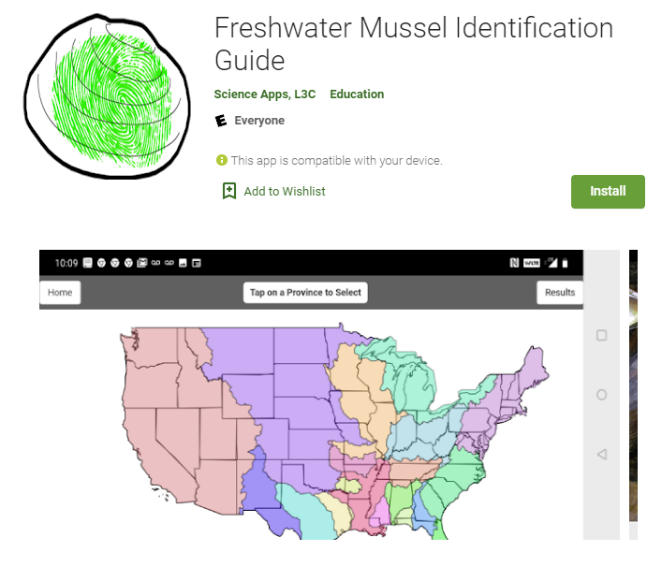 Freshwater Mussel App Now Available
Freshwater Mussel App Now Available
The Freshwater Mollusk Conservation Society has uploaded an application for the identification of freshwater mussels of the US based on faunal province and shell characters. The Android version of the app is available for download from Google play. Search for mussel Id, or click here. It will be available for iOS systems soon.
Application citation:
Oetker, S., A.E. Bogan, J. Harris, N. Johnson, C. Randklev, C. Robertson, J. Sundin, W. Martin and S.L. Martin. 2019. North American Freshwater Mussel Identification Application. Retrieved from: [14 July 2019]
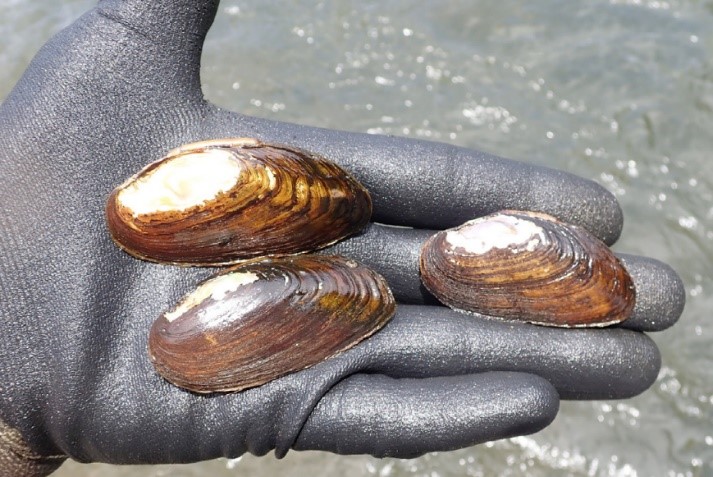 NCWRC Wildlife Diversity Program Quarterly Project Reports
NCWRC Wildlife Diversity Program Quarterly Project Reports
NCWRC’s quarterly wildlife diversity reports contain updates on a wide variety of nongame research projects and surveys. The latest issue includes an update on Robust Redhorse, crayfish (including a new species!), and mussel relocation and monitoring projects.
Call to Action!
If you want to contribute, have a story idea or would like us to include something in next quarter’s newsletter, email Kyle Rachels at [email protected] or give him a call at 252-548-4938.
Also, if you want to become more involved with one of the many great NCAFS committees then please check this link for information about each one, contacts, etc., https://nc.fisheries.org/who-we-are/committees/
 Valuable Links
Valuable Links
The American Fisheries Society Home Page offers a wealth of links to assist you in your fishy endeavors. This and archived NCAFS newsletters, along with links, chapter information, and upcoming meetings, can be found here on our own website.
